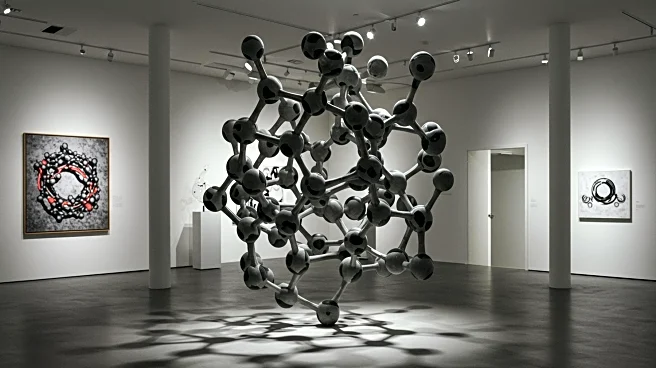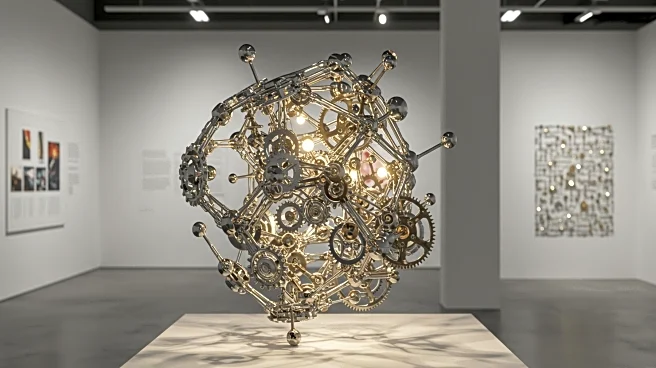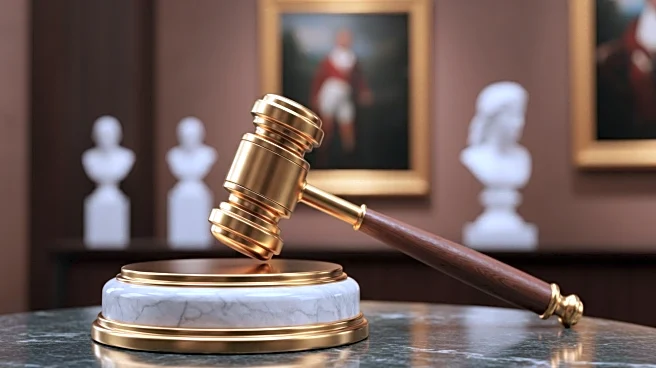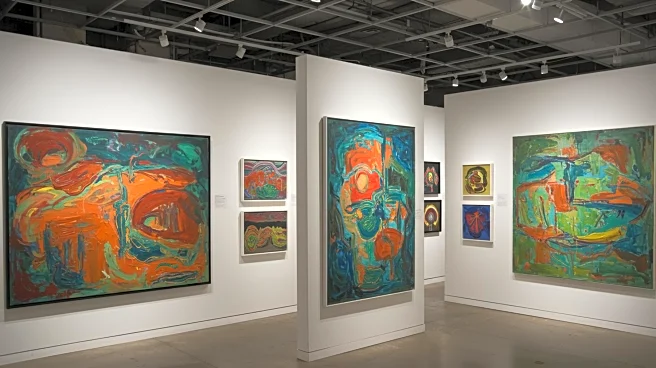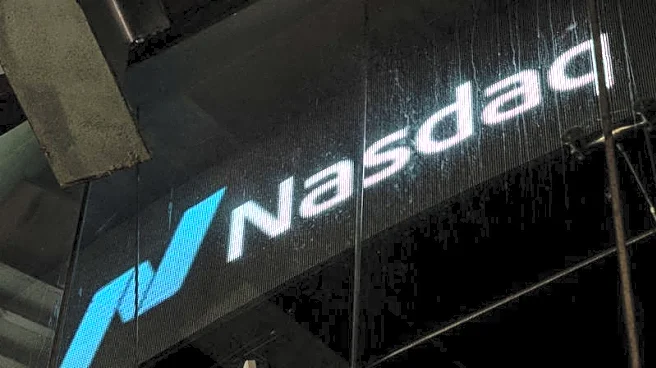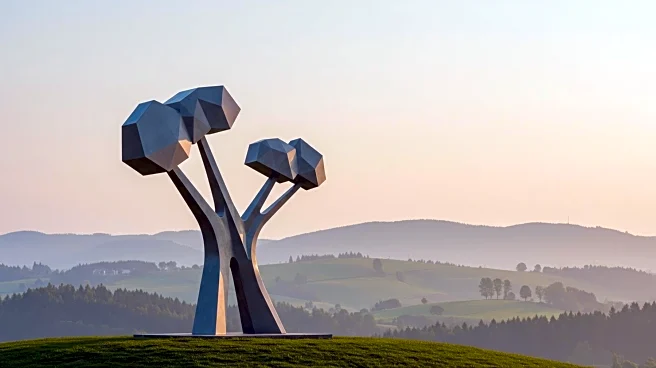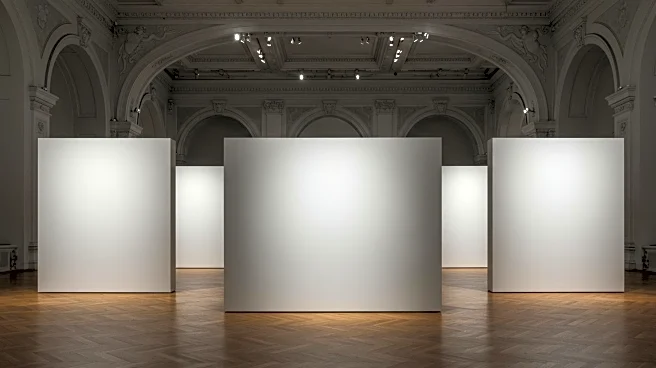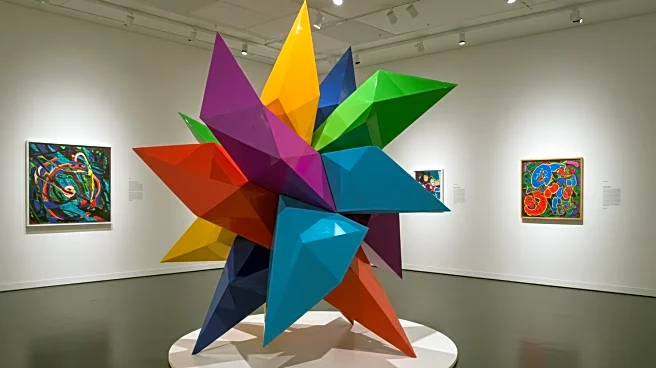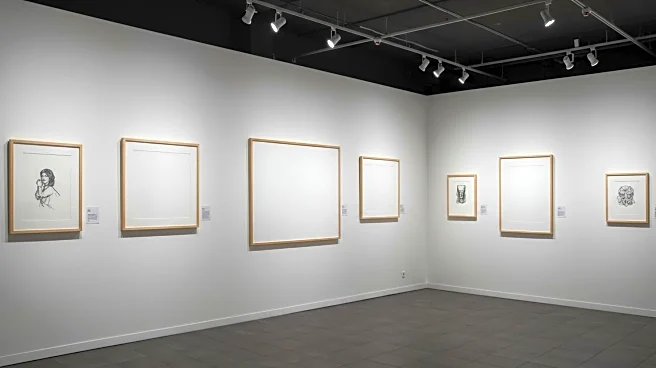What is the story about?
What's Happening?
Agnieszka Kurant, a prominent figure in contemporary art, is showcasing her first solo exhibition in New York in over a decade, titled 'Collective Intelligence' at the Marian Goodman Gallery. The exhibition features a variety of innovative artworks that blend scientific processes with artistic expression. Among the highlights are zinc sculptures cast from termite mounds, a bonsai tree intertwined with a 3D model of its future evolution, and a liquid-crystal painting that changes in response to social media trends. One of the standout pieces, 'Chemical Garden,' is a Plexiglas cube containing metal salts in solution, which crystallize over time to form metallic blooms, mimicking natural ocean floor phenomena. Kurant's work is characterized by its exploration of the intersection between science and art, creating pieces that provoke thought and evoke a range of associations.
Why It's Important?
Kurant's exhibition is significant as it challenges traditional boundaries between art and science, offering a unique perspective on how these fields can intersect. Her work prompts viewers to consider the implications of scientific processes in artistic contexts, potentially influencing future art practices and discussions around the role of science in art. The exhibition also highlights environmental themes, such as e-waste and deep-sea mining, encouraging reflection on human impact on the planet. By engaging with these topics, Kurant's art contributes to broader conversations about sustainability and the future of art in addressing global issues.
What's Next?
The exhibition 'Collective Intelligence' is open to the public at the Marian Goodman Gallery in New York until August 22. As Kurant's work continues to gain attention, it may inspire other artists to explore similar themes, potentially leading to more exhibitions that blend scientific inquiry with artistic expression. The reception of Kurant's work could also influence galleries and institutions to support innovative art that challenges conventional boundaries, fostering a more interdisciplinary approach to art curation.
Beyond the Headlines
Kurant's work raises questions about the ethical implications of using scientific processes in art, particularly in relation to environmental concerns. Her pieces, such as 'Chemical Garden,' evoke thoughts on the sustainability of art materials and the impact of art production on natural resources. Additionally, the exhibition invites viewers to consider the cultural significance of integrating technology and science into artistic practices, potentially reshaping how art is perceived and valued in society.
AI Generated Content
Do you find this article useful?
